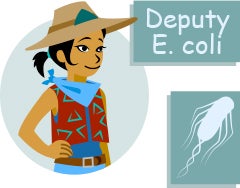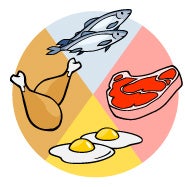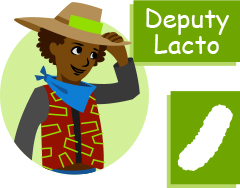 Escherichia coli (E. coli)
Escherichia coli (E. coli)
We already know that microbes live everywhere. We know that the human body contains more bacterial cells than human cells. And scientists estimate that there are more bacteria in your mouth alone than there are people living on Earth. But not all bacteria are bad. In fact, most are good. We could not survive without bacteria. Most bacteria in our bodies actually work to keep us healthy. They fight bad bacteria.
 Normally, E. coli is a good kind of bacteria. It is mostly harmless. E. coli lives in our intestines and on our skin. It helps to break down food and keeps our digestive systems running smoothly. But a few types, or strains, of E. coli can give us cramps and cause diarrhea. Infections from bad strains of E. coli are rare. Most people get infected from contaminated food or water. Undercooked meat and raw, unwashed vegetables can carry the bad microbes. E. coli bacteria can pass easily from person to person, especially when infected people don't wash their hands properly. That is why it is important to always wash your hands after you use the bathroom and before you eat or serve food.
Normally, E. coli is a good kind of bacteria. It is mostly harmless. E. coli lives in our intestines and on our skin. It helps to break down food and keeps our digestive systems running smoothly. But a few types, or strains, of E. coli can give us cramps and cause diarrhea. Infections from bad strains of E. coli are rare. Most people get infected from contaminated food or water. Undercooked meat and raw, unwashed vegetables can carry the bad microbes. E. coli bacteria can pass easily from person to person, especially when infected people don't wash their hands properly. That is why it is important to always wash your hands after you use the bathroom and before you eat or serve food.
 Lactobacillus
Lactobacillus
Lactobacillus is one of many families of “good bacteria.” These microbes live in our mouths and intestines. They help to prevent the overgrowth of harmful bacteria.
A common form is called Lactobacillus acidophilus. It helps our body to maintain a normal balance of good bacteria. L. acidophilus works by breaking down lactose and other sugars. It helps to promote healthy digestion.
These microbes are found in milk and fermented foods like yogurt, pickles, cheese, and sauerkraut. Lactobacilli and other helpful bacteria are sometimes called “probiotic.”
Additional images from Wikimedia via Mattosaurus (E. coli).
Read more about: Microbes
Bibliographic details:
- Article: Lacto and E. coli
- Author(s): Dr. Biology
- Publisher: Arizona State University School of Life Sciences Ask A Biologist
- Site name: ASU - Ask A Biologist
- Date published: 8 Jul, 2014
- Date accessed: 8 June, 2025
- Link: https://askabiologist.asu.edu/lacto-and-ecoli
APA Style
Dr. Biology. (Tue, 07/08/2014 - 15:30). Lacto and E. coli. ASU - Ask A Biologist. Retrieved from https://askabiologist.asu.edu/lacto-and-ecoli
Chicago Manual of Style
Dr. Biology. "Lacto and E. coli". ASU - Ask A Biologist. 08 Jul 2014. https://askabiologist.asu.edu/lacto-and-ecoli
MLA 2017 Style
Dr. Biology. "Lacto and E. coli". ASU - Ask A Biologist. 08 Jul 2014. ASU - Ask A Biologist, Web. https://askabiologist.asu.edu/lacto-and-ecoli

Be Part of
Ask A Biologist
By volunteering, or simply sending us feedback on the site. Scientists, teachers, writers, illustrators, and translators are all important to the program. If you are interested in helping with the website we have a Volunteers page to get the process started.



